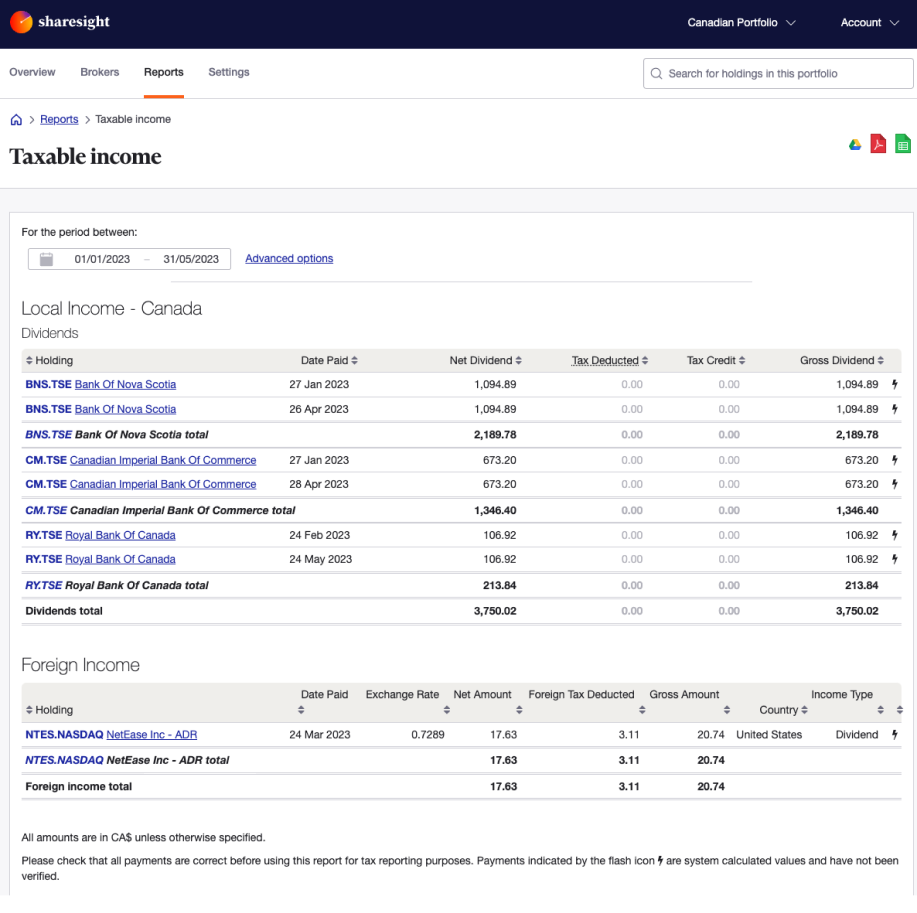How can we help?
Taxable Income Report
Available on Sharesight Starter, Standard, Premium and Sharesight Business plans.
The Taxable Income report in Sharesight lists separately all the net dividends, tax credits, tax deducted, TFN Withholding Tax and gross dividends received within the selected time period. The report is designed to provide the information relating to your portfolio that you are required to include in your tax return.
Embedded content: https://www.youtube.com/watch?v=3NnZOBWZeCM

Date range selector
The date range selector allows you to choose the period in which you would like to run the Taxable Income Report. By default the current tax year is displayed.

Note: Please check the figures provided in the report against your actual dividend statements before using this information in your tax return. Sharesight relies on third party vendors for dividend information and we do our best to ensure that all data is as accurate as possible, however, we are not responsible for missing or inaccurate data.
Last updated 16th December 2025